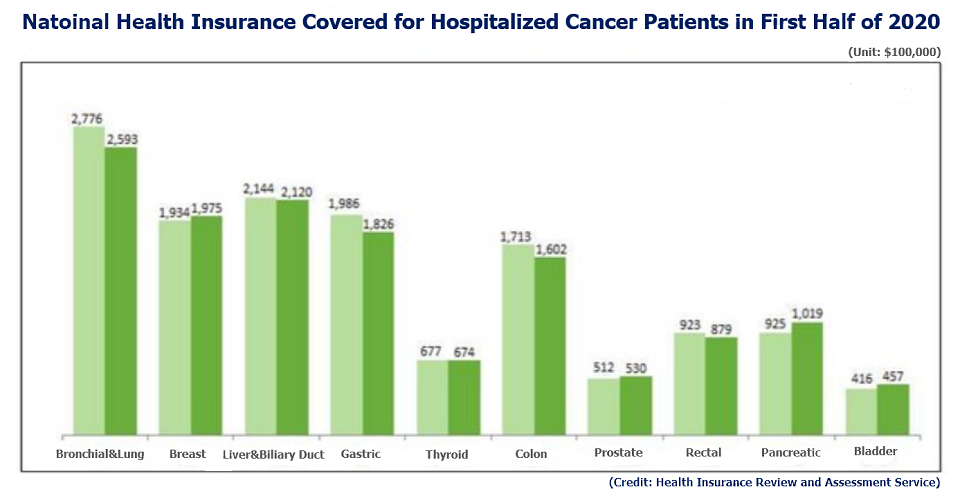Korea’s prolonged battle against the Covid-19 pandemic has had an impact on treating domestic cancer patients, recent government data has shown.

According to the Health Insurance Review and Assessment Service, the number of hospitalized cancer patients in the first half of last year increased 2.79 percent from the same period of 2019, but the medical treatment pay expense fell 1 percent over the cited period.
In the first half of 2020, the medical care benefits paid for cancer treatment amounted to 2.36 trillion won ($21.44 billion), down 2 billion won from 2.38 trillion won a year earlier.
Among the most frequently occurring tumors, pancreatic cancer showed the highest rise in medical care benefits of 10.61 percent to 101.9 billion won during the period. Following pancreatic cancer’s lead in terms of growth rate were bladder cancer with 45.7 billion won, up 9.86 percent, prostate cancer with 67.4 billion won, up 3.52 percent, and breast cancer with 197.5 billion won, up 2.12 percent.
In contrast, inpatient hospital costs for gastric cancer patients decreased 8.06 percent from 182.6 to 198.6 billion won. The payments also fell 6.59 percent to 259.3 billion for patients with bronchial and lung cancer, dropped 6.48 percent to 160.2 billion for colon cancer patients, declined 4.77 percent to 89.3 billion won for rectal cancer patients.
The number of cancer patients admitted to hospitals increased overall, but there were gaps depending on cancer type.
In the first half of 2020, the number of hospitalized patients with rectal and gastric cancer fell 10.41 and 10.31 percent, respectively, from a year ago to 8,928 and 21,386, recording the steepest declines among all cancers.
Hospitalized patients for colon, bronchial-lung, and thyroid cancer also decreased by 8.19, 7.13, and 5.14 percent, respectively.

